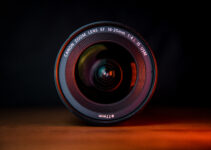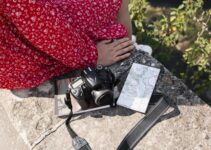What’s in my travel camera bag? Have you ever wondered how photographers manage to capture breathtaking moments on the go?
In this article, we delve into the essentials every travel photographer needs to have in their camera bag to create stunning images wherever they wander.
From a reliable DSLR camera to versatile lenses and accessories like tripods and filters, the key to capturing perfect travel shots lies in having the right gear.
Discover how packing smartly can make all the difference in the quality and variety of photographs you can capture during your adventures.

Curious to know more about the specific camera models, lens types, and innovative gadgets that can elevate your travel photography game?
Here do photographers have camera bag?
Join us as we uncover the must-have items that seasoned photographers and travel experts swear by, ensuring you’re always ready to seize the moment and create lasting memories.
What’s in my travel camera bag?
Your travel camera bag should include essentials to ensure you’re prepared for various shooting conditions.
Pack your main camera body, such as a DSLR or mirrorless camera, along with a versatile zoom lens (e.g., 24-70mm) for different perspectives.
Include a wide-angle lens for landscapes and a prime lens for low-light and portraits. Bring extra batteries and memory cards to avoid running out of power or storage.
A lightweight tripod is useful for stability and long exposures. Include lens cleaning tools, like microfiber cloths and a blower, to keep your gear dust-free.
A portable external hard drive can back up your photos. Don’t forget a camera strap for comfort, a weather cover for protection, and a remote shutter release for long exposures.
Lastly, a compact camera bag or backpack with padded compartments will keep everything organized and safe.
Here, can you take a camera bag to a plan?
Things to know before putting camera gears to your travel camera bag
As a beginner photographer what should you have in your travel camera bag?
As a beginner photographer, your travel camera bag should include essential and versatile items.
Start with a basic DSLR or mirrorless camera body and a versatile zoom lens, such as an 18-55mm, which is perfect for various types of shots.
Include an extra battery and a few memory cards to ensure you don’t run out of power or storage.
Pack a lightweight tripod for stability in low-light conditions and long exposures.

A lens cleaning kit, including a microfiber cloth and a blower, is essential for keeping your equipment dust-free. Bring a protective camera bag with padded compartments to keep your gear safe and organized.
Consider adding a polarizing filter to enhance outdoor shots and reduce glare.
A camera strap for comfort, a small notebook for jotting down photography tips, and a guidebook or manual for your camera model are also useful.
Lastly, pack a compact external hard drive for backing up your photos.
50 things to have in your travel camera bag
9 Important things to have in your travel camera bag
1. Camera Body (DSLR or Mirrorless)
The camera body is the heart of your photography setup. As a beginner or even an experienced photographer, choosing a camera body that suits your needs is crucial.
DSLRs and mirrorless cameras are popular choices, each offering distinct advantages. DSLRs provide an optical viewfinder and longer battery life, while mirrorless cameras are generally lighter and offer advanced autofocus systems.
When selecting a camera body, consider the sensor size (full-frame or crop sensor), resolution (measured in megapixels), and features like image stabilization, Wi-Fi connectivity, and weather sealing.
A good camera body will allow you to capture high-quality images and provide a solid foundation for your photography gear.
2. Standard Zoom Lens (e.g., 18-55mm)
A standard zoom lens, such as an 18-55mm, is versatile and ideal for various shooting scenarios.
This type of lens covers a range from wide-angle to short telephoto, making it suitable for landscapes, portraits, and everyday photography.
The zoom functionality allows you to adjust the focal length quickly, providing flexibility in framing your shots.
When choosing a zoom lens, look for features like image stabilization to reduce blur from camera shake and a fast aperture (e.g., f/2.8) for better performance in low light.
A standard zoom lens is essential for travel photography due to its adaptability and convenience.
3. Extra Batteries
Having extra batteries is essential to ensure you don’t miss any shots due to a dead battery.
Photography, especially when traveling, can be unpredictable, and opportunities can arise at any moment.
Cameras, particularly those with electronic viewfinders and high-resolution screens, consume a lot of power.
Carrying spare batteries ensures you can shoot throughout the day without interruption. Invest in high-quality, manufacturer-recommended batteries for reliability and safety.
Additionally, consider carrying a portable charger or a battery grip, which can hold multiple batteries and provide extended shooting time.
Here, can you put disposable camera bag into checked bag.
4. Memory Cards
Memory cards are vital for storing your photos and videos.
High-capacity and high-speed memory cards are recommended to handle large file sizes and rapid shooting modes.
Look for cards with fast read/write speeds, such as UHS-I or UHS-II, to ensure quick data transfer and minimize waiting times between shots.
It’s also wise to carry multiple memory cards to avoid running out of storage space during a shoot.
Organizing them in a dedicated memory card case helps keep them safe and easily accessible. Regularly back up your data to an external hard drive or cloud storage to prevent data loss.
5. Lightweight Tripod
A lightweight tripod is crucial for stabilizing your camera and achieving sharp images, especially in low-light conditions or when using long exposures.
Travel tripods are designed to be compact and portable, making them easy to carry on your adventures.
Look for tripods made from carbon fiber for durability and reduced weight.
Features like adjustable legs, a ball head for flexible positioning, and a quick-release plate for fast setup and breakdown are beneficial.
A good tripod will help you capture steady shots of landscapes, architecture, and night scenes, and it’s also useful for self-portraits and group photos.
6. Camera Strap
A comfortable camera strap is essential for carrying your camera safely and conveniently.
A good strap distributes the weight of the camera evenly across your body, reducing strain during long periods of use. Look for straps with padded sections, adjustable lengths, and secure attachment points.
There are various types of straps, including neck straps, shoulder straps, and crossbody straps, each offering different carrying styles.
Quick-release mechanisms can also be handy for swiftly detaching the camera when needed. A reliable strap not only enhances comfort but also provides security against accidental drops.
7. Lens Cleaning Kit
Keeping your lenses clean is crucial for maintaining image quality.
A lens cleaning kit typically includes a microfiber cloth, lens cleaning solution, a blower, and a brush. These tools help remove dust, smudges, and fingerprints that can degrade image clarity.
Using a blower first to remove loose particles reduces the risk of scratching the lens surface when wiping it.
Regular cleaning ensures that your lenses remain in optimal condition, providing sharp and clear images. A compact cleaning kit is easy to carry and can be a lifesaver in dusty or humid environments.
8. Portable External Hard Drive
Backing up your photos is essential to prevent data loss, and a portable external hard drive offers a convenient solution.

Look for drives with high storage capacity and fast transfer speeds, such as SSDs (Solid State Drives), which are also more durable than traditional HDDs (Hard Disk Drives).
Many external hard drives come with built-in encryption and backup software for added security and ease of use.
Regularly transferring your images to an external drive not only safeguards your work but also frees up space on your memory cards for continued shooting.
Compact and lightweight, these drives are perfect for travel.
9. Camera Bag with Padded Compartments
A dedicated camera bag with padded compartments is essential for protecting your gear.
Choose a bag that fits your camera body, lenses, and accessories snugly, providing cushioning against bumps and shocks.
Look for features like weather-resistant materials, lockable zippers, and multiple pockets for organizing smaller items.
Backpack-style bags distribute weight evenly and are comfortable for long journeys, while shoulder bags offer quick access to your gear.
A well-designed camera bag ensures that your equipment is safe, organized, and easily accessible, allowing you to focus on capturing stunning images during your travels.
Here, can you put a tripod in a checked bag?
What’s in your travel kit? And how best to transport?
In your travel kit, include the essentials: a camera body (DSLR or mirrorless), a versatile zoom lens (e.g., 18-55mm), extra batteries, memory cards, a lightweight tripod, a lens cleaning kit, a portable external hard drive, and a comfortable camera strap.
To transport your gear, use a padded camera bag or backpack with customizable compartments to protect each item.
Choose a bag with weather-resistant materials and lockable zippers for added security. Ensure the bag is carry-on size to keep your equipment with you during flights.
Distribute the weight evenly by wearing the bag as a backpack to reduce strain during long journeys.
For added protection, pack silica gel packs to control moisture and a rain cover for unexpected weather.
Always back up your photos to the external hard drive and store it separately from your camera bag for safety.
Related faq’s
What do I need in a camera bag?
In your camera bag, pack the essentials: a camera body (DSLR or mirrorless), a versatile zoom lens (e.g., 18-55mm), extra batteries, memory cards, a lightweight tripod, a lens cleaning kit (microfiber cloth, blower), a portable external hard drive for backups, and a comfortable camera strap.
Include a polarizing filter, lens caps, and a rain cover for protection. Use a padded camera bag with customizable compartments to keep everything organized and safe.
Ensure the bag has weather-resistant materials and lockable zippers for added security during travel.
How do you pack a camera bag for travel?
What do you need for travel photography?
For travel photography, pack a versatile camera body (DSLR or mirrorless) and a standard zoom lens (e.g., 18-55mm) to cover various shooting scenarios.
Bring extra batteries and memory cards to ensure you don’t run out of power or storage. A lightweight tripod is essential for stability, especially for low-light and long-exposure shots.
Include a lens cleaning kit (microfiber cloth, blower) to keep your equipment clean. A portable external hard drive allows for backup of your photos, safeguarding your work.
A comfortable camera strap helps with long days of shooting, and a weather-resistant, padded camera bag with customizable compartments will protect and organize your gear.
Additionally, pack a polarizing filter to reduce glare and enhance colors, and a camera rain cover for protection against unexpected weather.
Silica gel packs can help control moisture inside your bag. Finally, carry a compact, multi-purpose lens, such as a 50mm prime, for low-light and portrait shots.
Does a camera bag count as a personal item on a plane?
A camera bag can count as a personal item on a plane, depending on its size and the airline’s policies.
Most airlines allow a personal item that fits under the seat in front of you, such as a small backpack, laptop bag, or camera bag. To ensure your camera bag qualifies, check the airline’s specific dimensions for personal items.
Choose a compact, padded camera bag that securely holds your gear while fitting within these size limits. Packing efficiently will help you meet the criteria without compromising the protection of your equipment.
If your camera bag is larger or heavily packed, it might be considered a carry-on instead of a personal item.
Always verify with the airline before traveling to avoid any issues at the gate.
Keeping your camera bag as a personal item ensures easy access to your equipment during the flight and adds an extra layer of security by keeping it close.
Conclusion:
Your travel camera bag is undoubtedly packed with essentials tailored to your photographic needs.
From the camera body itself to various lenses spanning wide-angle to telephoto, you’ve likely covered all your bases for different shooting scenarios.
Accessories such as spare batteries, memory cards, lens filters, and a sturdy tripod are probably nestled in there too, ensuring you’re ready for extended shoots.
Additionally, essentials like lens cleaning tools, a remote shutter release, and perhaps even a portable light source could round out your kit.
In essence, your camera bag is a comprehensive arsenal to capture the beauty of your travels.







